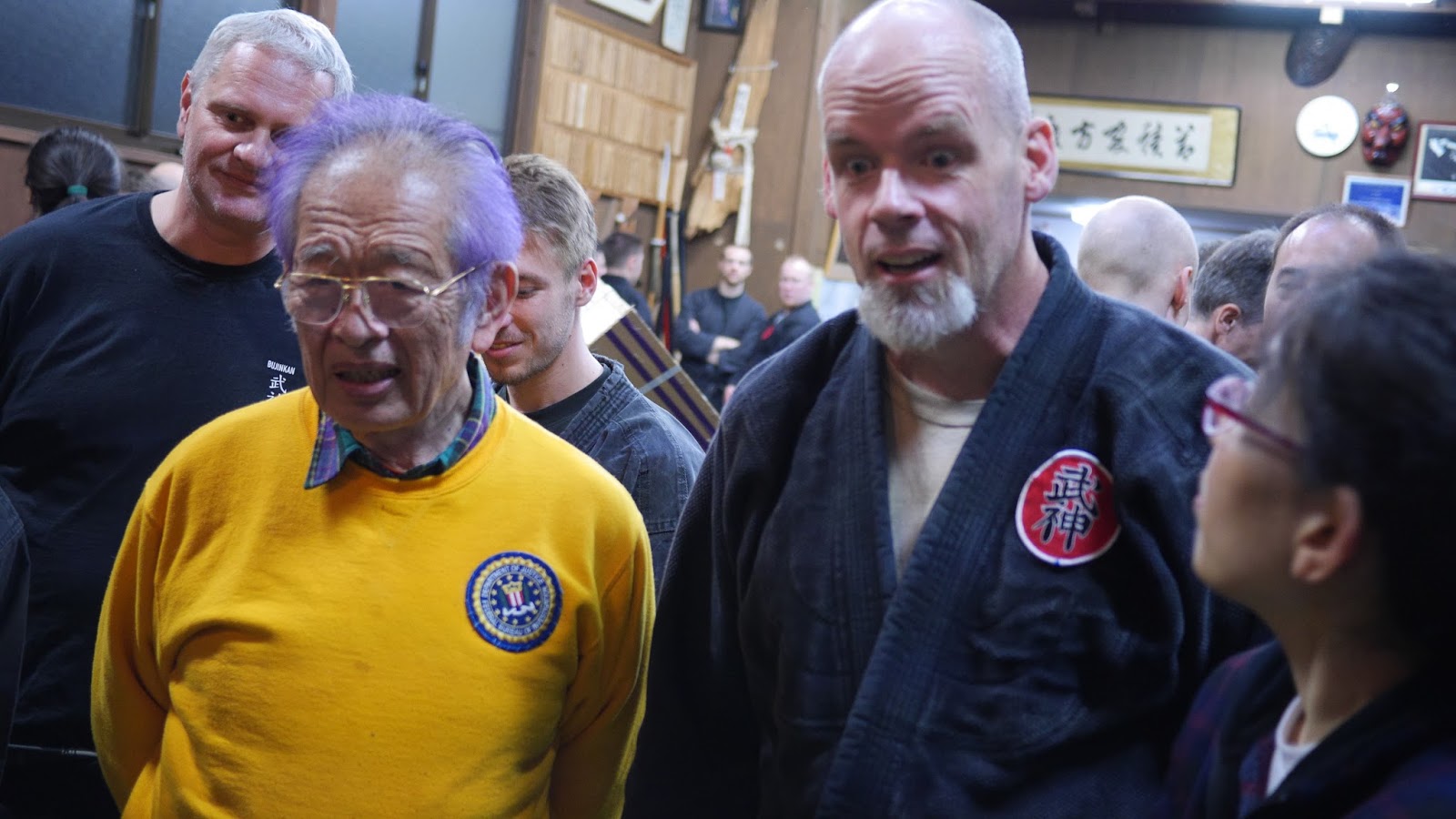Kyusho of Zero in Three Easy Steps
From Bujinkan Santa Monica by Michael
 |
| Three Lamps, 日本民家園 Nihon Minka-en. photo by Michael Glenn |
One thing I know for sure about this year's theme is that it's difficult to teach. I went to Japan last month to study with Hatsumi Sensei. And he gave me a lot to work on. So I have been working.
Like many things Soke shares with us, this theme is connected to many previous themes. It did not suddenly appear this year in our training. And I personally am grateful to have this as a focus because I have been working on this very idea for several years in my own training.
But I always tell my students, this is what I am doing and studying myself, but I don't know how to teach it. Sorry.
Yet, thanks to Hatsumi Sensei's focus this year, I have new insights that I can share. Maybe they will help anyone trying to get a grasp on Shin Gin.
As I mentioned in another post about the 2014 Bujinkan theme, this idea is like entering a divine space. But first you have to find it. And Hatsumi Sensei says we should make it ourselves. Make our own kukan where we can be safe, where we can survive and live. So, how do you start?
Step 1: 阿吽の呼吸 aunnokokyuu
One way to begin is with 阿吽の呼吸 aunnokokyuu. Hatsumi Sensei used this term which means harmonizing. Like yin/yang or in/yo. Connect the Mind, body and spirit, with that of your opponent.
If you do that, the fight will never happen in the first place. But if it does, anger and aggression tend to dissipate when there is this kind of harmony. And even still, if the attacks come, you are so connected that it would be like you punching yourself. How hard is it to avoid that?
Go ahead, try it. Punch yourself. I'll wait right here while you do.
If you are not masochistic, then you either won't do it at all, or it is very easy to avoid. This is what it feels like when you are harmonized with your opponent. But the theme this year is larger than this.
Step 2: 空間を陽空 kuukanwoyokuu
After using 阿吽の呼吸 aunnokokyuu, you enter your own space. Either by finding it or creating it. Soke said it is like an air pocket.
Hatsumi Sensei said 空間を陽空 kuukanwoyokuu. This is Yang empty space. A positive, safe space. Like seeing daylight when emerging from a prison. Or the clouds parting after a storm.
This is where things get mysterious. Shin Gin. Budo guided by divine resonance.
Step 3: 神韻武導 Shin Gin Budo
Once in that space, you can harmonize and connect with the heavens. Through this connection you are a lot more powerful than your own strength, ability, technique, or wit could ever be when fighting by yourself. You gain a natural 抑止力 yokushiryoku, the ability to deter attacks.
And as for offense, Hatsumi says you can strike opponents with your spirit. You strike the space itself. 空間の九勝 Kukan no Kyūshō. Soke said,
"Lift the opponent up into the kukan and then blast them away with your spirit. It's the kyusho of air. It's the kyusho of zero."3 easy steps, right?
What a crazy, wonderful, and powerful art we study! I would never believe any of this if I hadn't witnessed it in person, felt it directly, or done it myself. I hope you can find this in your training this year.

















